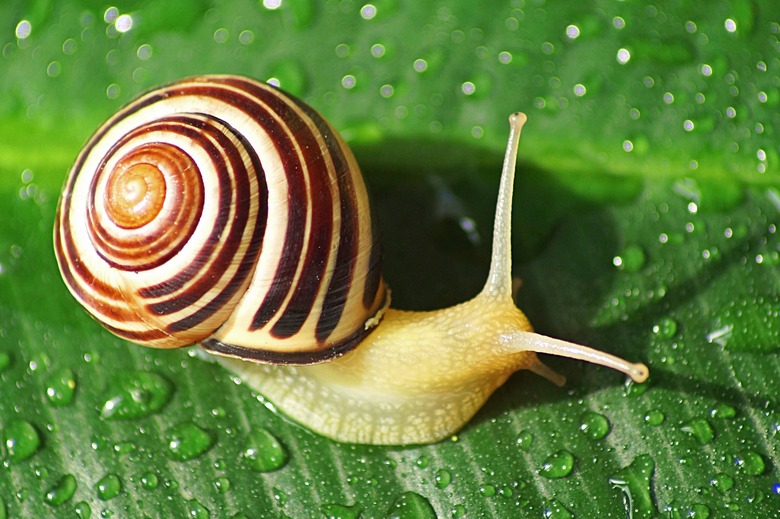Snails Adaptation To Habitat
Snails adapt to salt water, fresh water and land habitats, thriving in oceans, lakes, ponds, streams, creeks and rivers. Snail adaptations allow for respiration, movement, digestion and protection from injuries or predators.
Gills
Gills
Snails adapt to an aqueous habitat through the use of gills that take in oxygen given off by underwater plants, while filtering nutrients into their systems through breathing water.
Shells/Operculum
Shells/Operculum
Snails protect themselves from predators by taking coverage beneath their shells and through the use of the operculum, a door-like part that closes the opening of the shell.
Tentacles
Tentacles
Snails have two large tentacles with eyes at the end of them for vision and two small tactile tentacles used to feel around their habitat for food, shelter and spawning grounds.
Foot
Foot
Snails have a mucus-laden, muscular foot adaptation, that flexes and contracts allowing for movement in water and land habitats, with the mucus layer preventing injury and friction along surfaces.
Rasp Tongue
Rasp Tongue
Snails use a rasp tongue, known as a radula, lined with tiny, rough teeth to grasp and sand food particles, mainly vegetation, down for consumption and digestion.
Cite This Article
MLA
DiVico, Taylor. "Snails Adaptation To Habitat" sciencing.com, https://www.sciencing.com/snails-adaptation-habitat-5497296/. 15 November 2019.
APA
DiVico, Taylor. (2019, November 15). Snails Adaptation To Habitat. sciencing.com. Retrieved from https://www.sciencing.com/snails-adaptation-habitat-5497296/
Chicago
DiVico, Taylor. Snails Adaptation To Habitat last modified March 24, 2022. https://www.sciencing.com/snails-adaptation-habitat-5497296/
